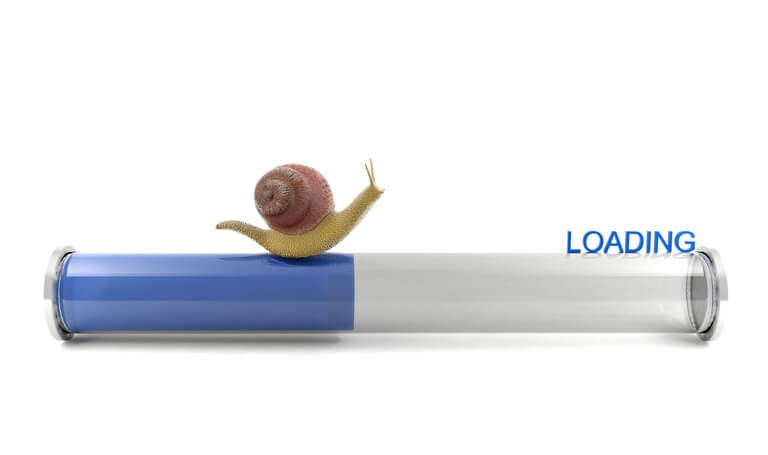By Anna Johansson
As a small business, every sale you get is a victory. It means more clients and higher profits. A huge goal for businesses is removing all obstacles in the way of successful sales. A slow, poorly performing website is one of many things that can drag your sales down.
If you don’t believe it, consider these statistics:
- 40 percent of shoppers will abandon a page if it takes more than 3 seconds to load.
- 79 percent of site visitors won’t return or tell their friends about a slow-loading site.
- 73 percent of internet users have visited a site that loads too slowly for them.
- Nearly 50 percent of visitors expect the site to load faster than 2 seconds.
- A delayed page response of just 1 second can reduce your conversion rate by 7 percent, which would cause an e-commerce site making $100,000 per day to lose $2.5 million in sales every year.
The ill-effects of a slow loading site go on. “Losing one customer to poor website load time can cause a domino effect as other customers decide not to visit your site,” reports Arash Asli of the service marketplace for businesses Yocale. “Fast-loading websites give users a better experience, as well as resulting in higher conversions and higher engagement.”
With every lost customer, you lose sales. That customer won’t tell their friends about you—or worse: they’ll tell their friends about their horrible experience and reduce your reach. It takes about 12 positive experiences to make up for a single bad experience. All the while, your sales continue to dwindle.
These are the facts, and with the affordability and ease of creating a great website, you have no excuse for a slow site. If your site doesn’t load as quickly as customers demand, take steps to improve your load times now.
Here are some things you should be doing:
Cache Files
Use a caching tool like W3 Total Cache, SG CachePress, or another tool that works with your web host to reduce file size. It will keep content local and reduce requests. Without this fluff, your site will be able to load more quickly.
Make Your Site Responsive
Surprisingly, not all sites use a responsive design. Many expect their customers to access their website on desktop only or their responsive design doesn’t work with all devices. This results in slow loading and often distorts the content on the page. Some sites won’t load at all on mobile because they haven’t been programmed to do so. You’ll never increase your page visits if the 80 percent of consumers who use their phones to access the internet can’t visit your site.
Improve Navigation
The loading time of your site isn’t the only thing that will slow down your sales. The time it takes users to find what they’re looking for can also be a sales killer. If they’re using your navigation and search bar, but find themselves going in circles or struggling to find the solution, they’re more likely to abandon your site entirely.
“The navigation system acts like a road map to all the different areas and information contained within the website,” says Andrea Gust of the digital marketing firm Treefrog. “If the navigation is clear, visitors will stay and have a good experience, which ultimately leads to more business for you.”
Develop a navigation system that’s effective on both desktop and ecommerce sites. This change may be entirely different than what you’ve always known, but it could benefit the entire dynamic of your sales stream.
Reduce Bottlenecks
There’s more to a website’s speed and efficiency than the design. There may be things running in the background that can slow down the site.
“The more that needs to process and load when a visitor navigates to your website, the longer it’s going to take to load. Simplicity can help significantly,” says an article from Nexcess.net. “Whether you’re using too many extensions/plugins, too many banners and images, or other elements in excess, the net result will be the same – slower loading times.”
Simple changes to the interface of your site can make all the difference, and may not be the only time you need to make some renovations. Technology will change constantly, and there are often ways to improve your site’s speed and load times to enhance the user experience.
Anna Johansson a.m.johansson88@gmail.com is a freelance writer, researcher, and business consultant. A columnist for Entrepreneur.com, HuffingtonPost.com and more, Anna specializes in entrepreneurship, technology, and social media trends. Follow her on Twitter and LinkedIn.







